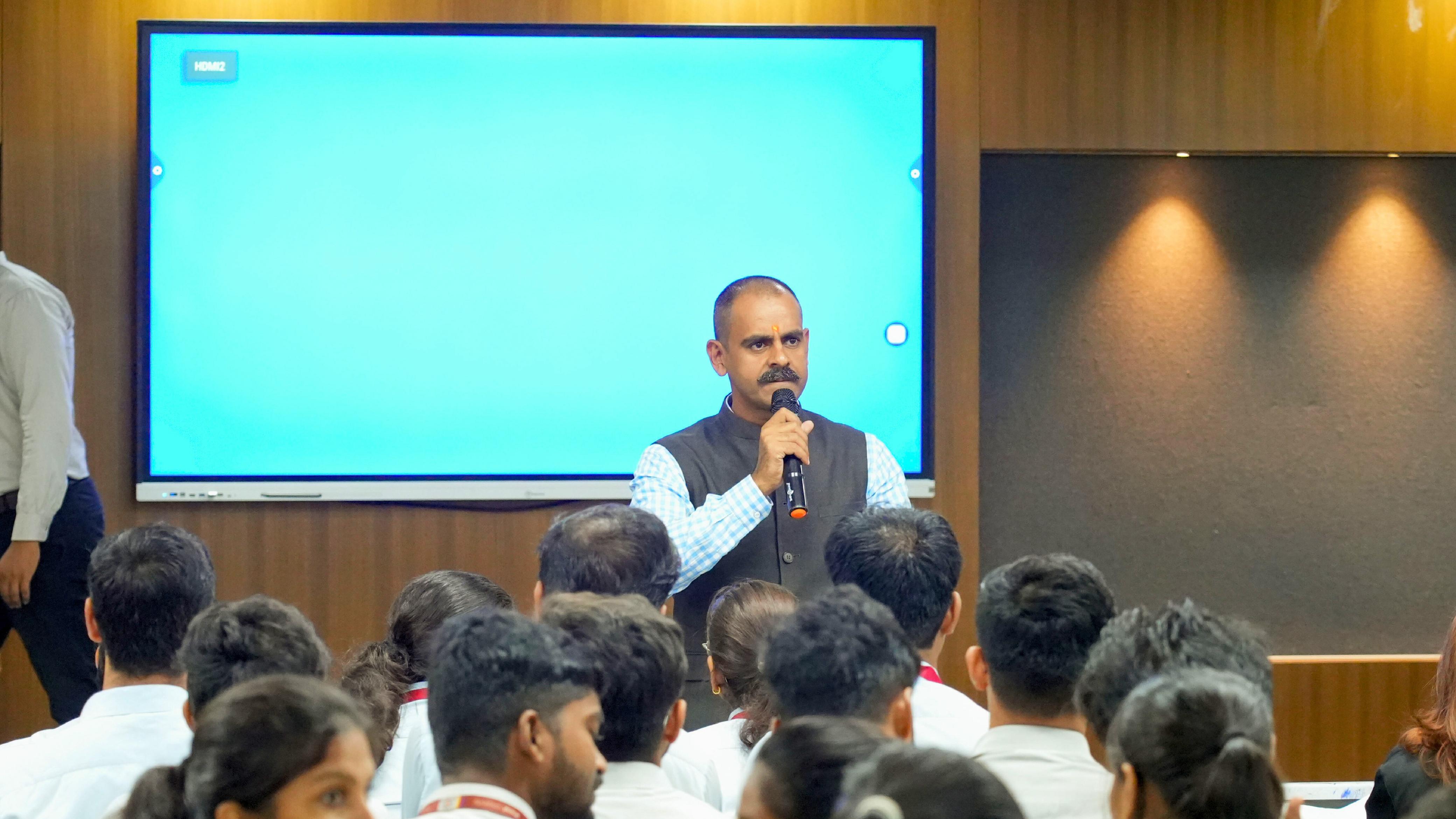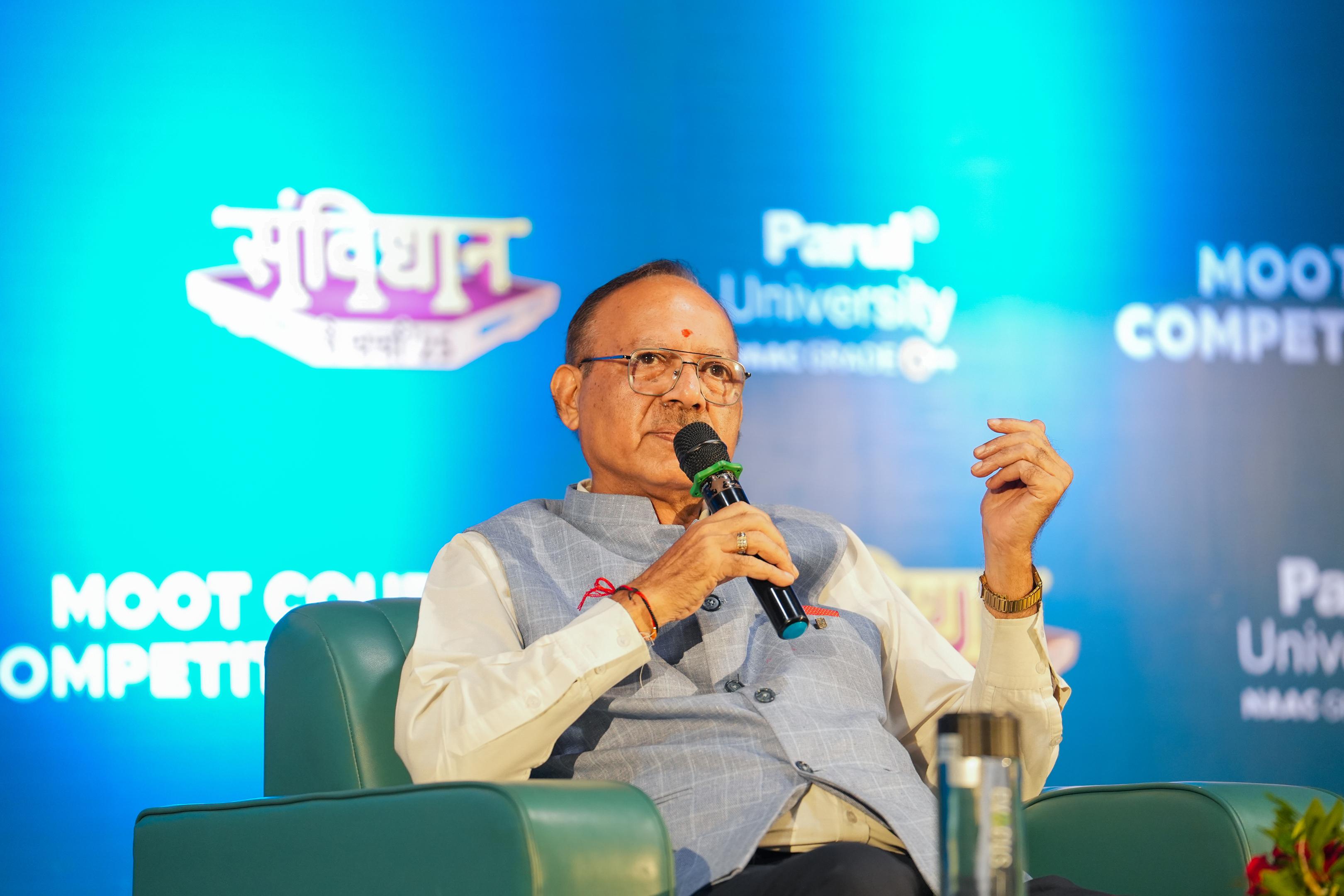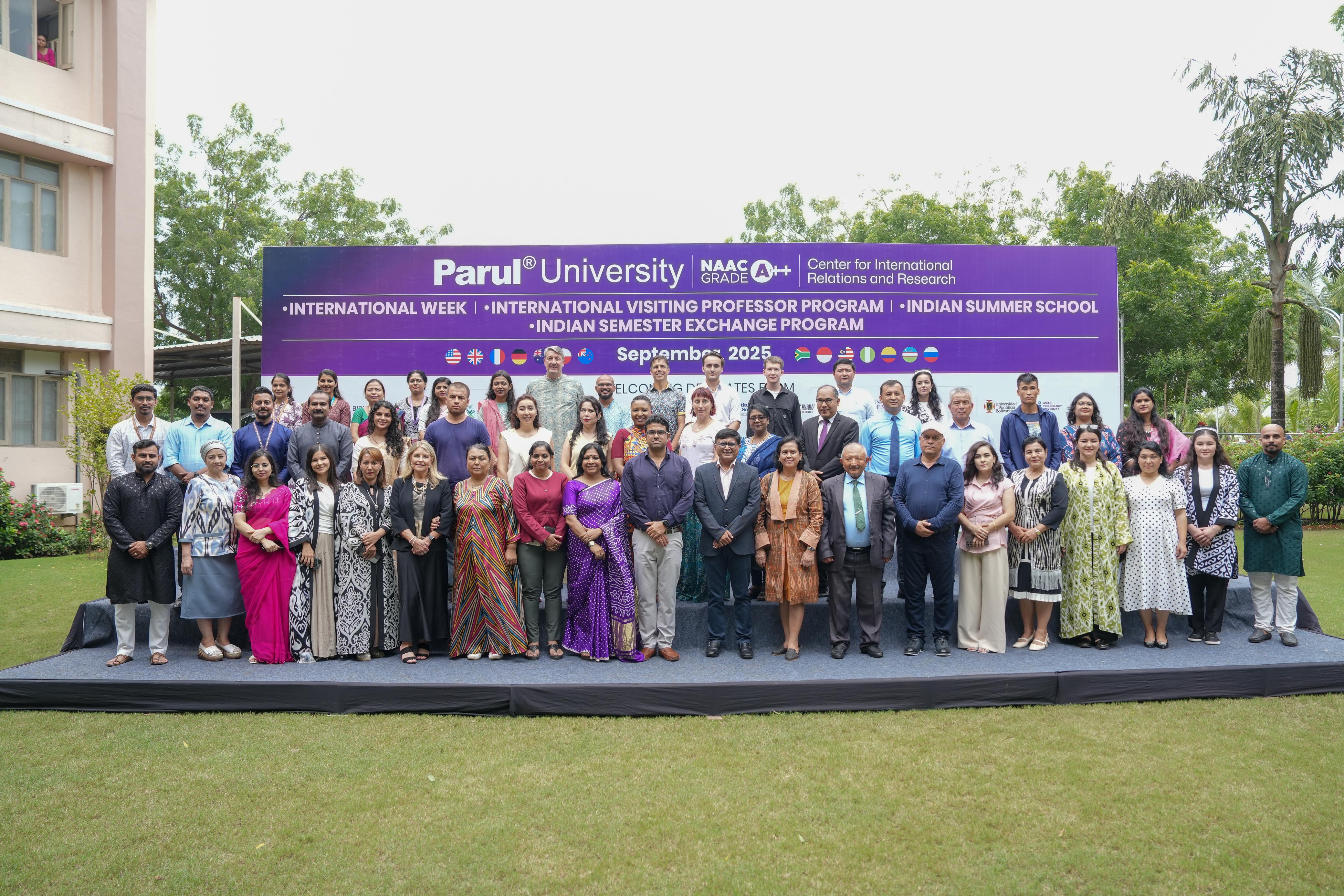The Constitution is often read in silence, underlined in textbooks, or cited in judgments. It did, however, speak out loud at Samvidhan Pe Charcha 3.0 through judges, advocates, and students who debated, questioned, and rethought what justice meant. For four days, Parul University became a civic forum with youthful voices found the confidence to assert their place in the legal narrative, and national principles collided with global viewpoints.
“The Constitution is not a mere lawyers’ document; it is a vehicle of life, and its spirit is always the spirit of age.”
- B. R. Ambedkar
When Justice Abhay S. Oka reminded the audience that the Indian Constitution’s most vital role was “to keep the country intact,” his words echoed the national heartbeat. For India, a land of infinite diversities, the Constitution is more than law; it is glue, aspiration, and a promise of continuity.
But then came Attorney Loa Zaroour from Lebanon, offering a contrast. For Lebanon, she explained, the Constitution is brief, historically constrained, and less expansive. India’s, on the other hand, grows in spirit through judicial interpretation. “A constitution must reflect a nation’s soul, its history, culture, and disputes,” she said, highlighting how legal texts become mirrors of society.
This juxtaposition, one voice anchoring unity within India, another situating constitutionalism within global plurality, made Samvidhan Pe Charcha much more than a local event. It became a transnational dialogue: a space where students saw that constitutional questions are never isolated, but part of a worldwide conversation on rights, duties, and democracy.
Justice Indira Banerjee’s keynote cut through decades of slow progress with one unflinching line: “I don’t want to count one, two, or three, I want 50%.” She wasn’t making a symbolic appeal; she was demanding a structural shift, true gender parity in India’s judiciary.
While moot courts and keynote speeches often steal the spotlight, the deeper purpose of Samvidhan Pe Charcha lies in something quieter: civic formation.
Sunil Kumar, former Assistant Superintendent at Tihar Jail and acclaimed author of Black Warrant: Prisoner of Tihar Jail, brings over two decades of firsthand experience in India’s prison system. Recounting his early days at Tihar Jail, he noted how caste and social biases challenged his credibility. ‘That was the first job I had to prove myself. Had I failed to prove myself, the consequences would have been disastrous.’ His story stood as a reminder of resilience in the face of prejudice.
In addition to honing their legal knowledge, students were practicing their duties as future citizens who would defend liberty, equality, fraternity, and dignity by participating in discussions on federalism, social justice, privacy, and digital rights. In this way, Samvidhan Pe Charcha and similar gatherings are civic laboratories rather than extracurricular activities.
Samvidhan Pe Charcha 3.0 was not about memorising Articles and Clauses. It was about seeing the Constitution as a living document, one that holds nations together, invites global dialogue, demands gender justice, and asks each generation to renew its civic responsibilities.
The bigger questions remained as the last gavel of the Moot Court fell and students tucked away their notes: How will these young men and women continue the tradition of constitutional morality? Will they uphold the law's promise of justice in addition to arguing it when they put it into practice?
As Samvidhan Pe Charcha 3.0 drew to a close, it was clear that the event’s value went far beyond speeches and moot courts. It reminded students that the Constitution is not just a set of rules, but a guide to be just, equal, and responsible citizens. The conclave may have ended, but its learnings linger.
[ Samvidhan Pe Charcha, Parul University Law Fest, Constitutional Education, Moot Court Competition, Civic Responsibility in Law, Gender Justice in the Judiciary, Transnational Constitutional Dialogue, Legal Leadership for Students, Indian Constitution and Youth]

.jpg)

.jpg)



